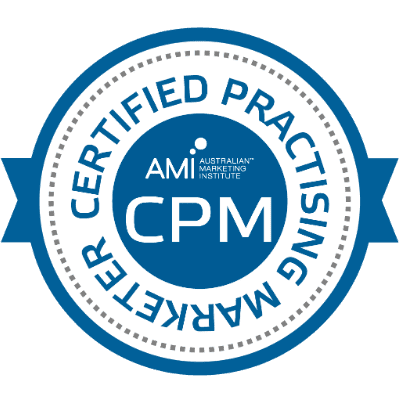A Site That Looks Right: 7 Principles of Good Website Design
Nothing will turn potential customers away more than bad website design. Here are 7 good website design principles to keep in mind.
The overall premise of a good website is simple: your end-user should not have to think as much. How is this achieved? By creating a website that meets your customer’s needs, is easy to navigate, and efficient in every way.
In a way, you have to pre-empt exactly what your customer is looking for when it comes to the design and functionality of a website. This doesn’t only apply to your home page, but every page.
To learn more about the top principals of great website design, this blog outlines what you ought to know.
Website Design Tactics For the Best User Experience
Before you begin your site design, it’s important to sketch out the layout of your website. Put yourself in the shoes of an end-user and consider how they might engage with your website. It’s also crucial that your website meets a good design standard on computers, tablets, and most importantly, mobile phones. This is where responsive website design is an absolute must.
Here are a few other important fundamentals to consider, too:
1. Ensure Your Website Has a Clear Purpose
Before you begin designing and building a website, you must clearly outline and understand what it’s going to do and offer your customers. You must have a clear outline of its function and purpose on the internet.
If you plan on selling merchandise, then the fundamental purpose and priority of your website is to sell those products. With every decision you make about its design and functionality, ask yourself how it’s going to meet this purpose.
2. Clearly Define Your Audience
Another major factor to consider is who your website is going to facilitate, i.e. your audience. Before you begin the design and build process, make sure you have a clear understanding of your target audience. These are the people who are engaging with your website in order to purchase your products/services.
It’s important to consider every aspect of your website and your target audience. This includes imagery, colouring, fonts, layout, the amount of page content you use, how your content is written, and more.
If you’re building an e-commerce website, carefully consider how your target audience shops online and their consumer habits. Remember to cater to your target demographic and their social status. In other words, do your research and optimize your website to suit!
3. Prioritize Straightforward Navigation
Ever landed on a website that looked like it was half-finished? A website that’s so minimal you have no idea how to contact anyone or search for anything? On the flip side, there are websites that are overwhelmingly cluttered and distracting. This can also be a huge deterrent.
Don’t make the mistake of trying to be too trendy, ”cool”, or minimal. These websites are obscure and frustrating to navigate. On the other hand, don’t overwhelm your audience with garish imagery, fonts, pop-ups, and video.
Think about your website navigation from a personal point-of-view and then from a customer point-of-view. You want it to be easy to navigate so that you can fulfill your website’s purpose. Essentially, the structure of your website should minimize the cognitive effort it takes to find something or get from page A to page B.
4. Consider Your Business Style and Branding
The last thing you want is for your website to look like any other generic site on the internet. While navigation and functionality are super important, so is brand personality and style.
Think about how you’re going to portray the aesthetic of your brand and business across your site. Make sure your imagery, colours, fonts, and branding match-up from one page to the next — consistency is key. Ultimately, you want to portray the type of products/services you offer through the aesthetic and style of your website.
It’s always a good idea to keep an eye on the top website trends throughout the year. Keeping up with trends can help to keep your website relevant and easy-to-use.
5. Never Skimp on High-Quality Imagery
Now that you have the general design and function of your website outlined, it’s time to focus on individual elements that can really take your website to the next level. Just one of these elements is imagery.
In today’s visual and fast-paced world we live in, website imagery is not only for aesthetics, but can also serve a functional purpose. Images tell a story and also create the mood of your website. They translate your branding and the level of service you offer.
Not only are low-quality images an absolute no-no, but generic stock images, too. These can make your website look amateurish and impersonal. Choose imagery that aligns with your target audience, reflects your brand and your business purpose.
6. Don’t Underestimate the Power of Your Fonts
The typeface of your website may seem like a minor factor to consider. But on the contrary, website font is a make or break factor. Remember that your end-user spends most of their time reading or scanning the content on your website. If this content is difficult to read, you are sabotaging the purpose of your website.
Stick to fonts that are clean, uncluttered, easy-to-read, and professional. You can also use font to translate your brand and the voice of your content. Pick a font that works well with different lengths of content, too.
7. Website Content is King
It’s no secret that the performance of a website hinges on its SEO strategy. This is where website content comes in as king of the proverbial castle. Make sure your website copy is engaging, easy-to-read, and uses a consistent tone. Using a different tone of voice from one page to the next will confuse your audience.
Your website copy should be detailed, but to-the-point. If you were a customer on your website, how much content would you be willing to read? But most importantly, make sure your website content is SEO optimized with the right keywords that are relevant to your line of business.
Looking For Digital Growth?
Website design in today’s day and age hinges on these principals as well as a smart, well-considered digital marketing strategy. If you are looking for professional digital marketing expertise, Felicity Jane Digital is your go-to.
Learn more about our website design and SEO services and get in touch for a tailored digital growth strategy today.







